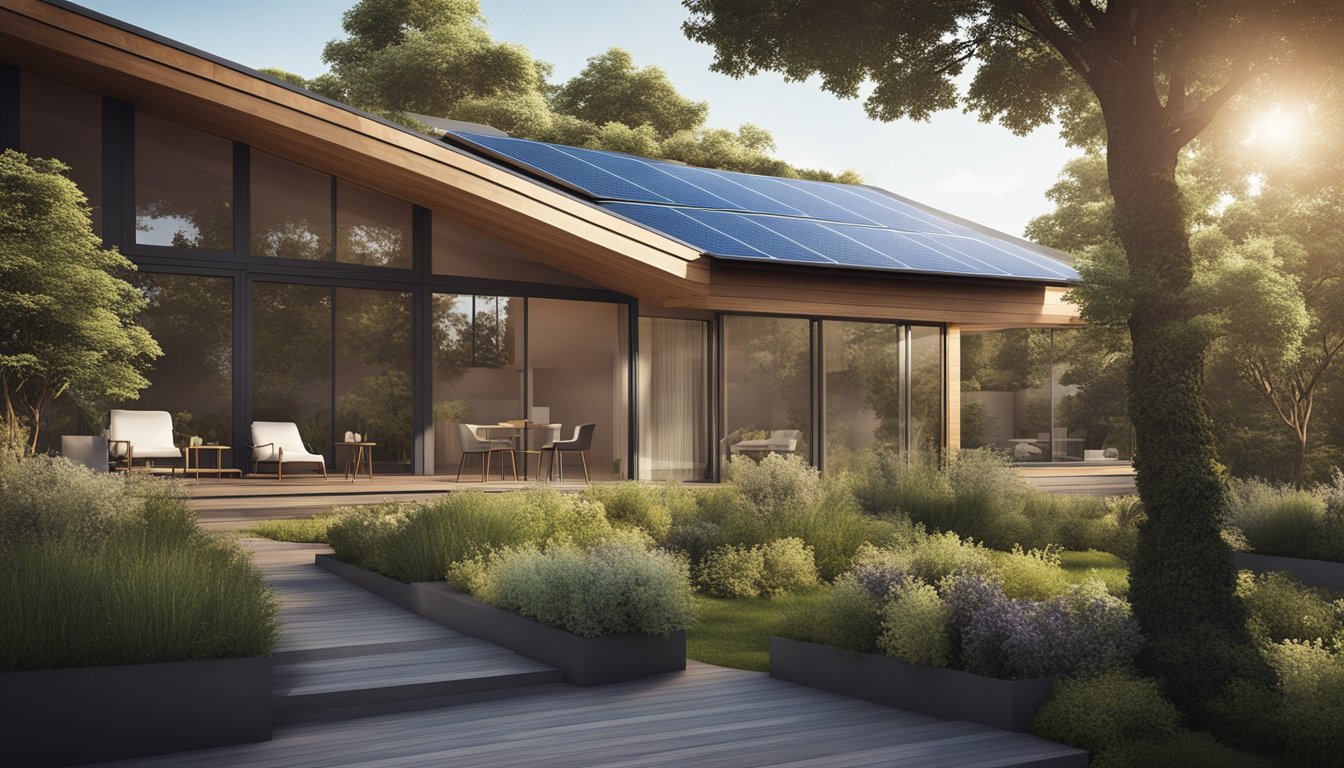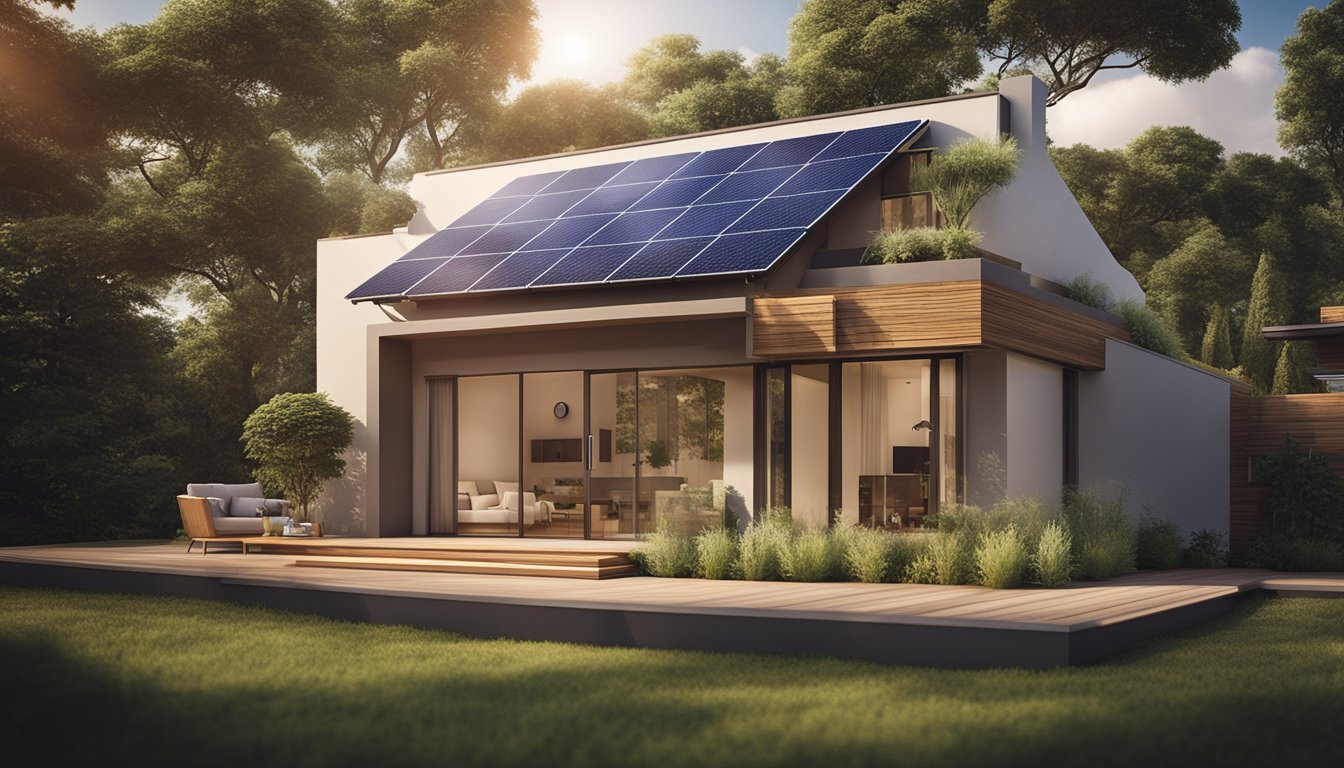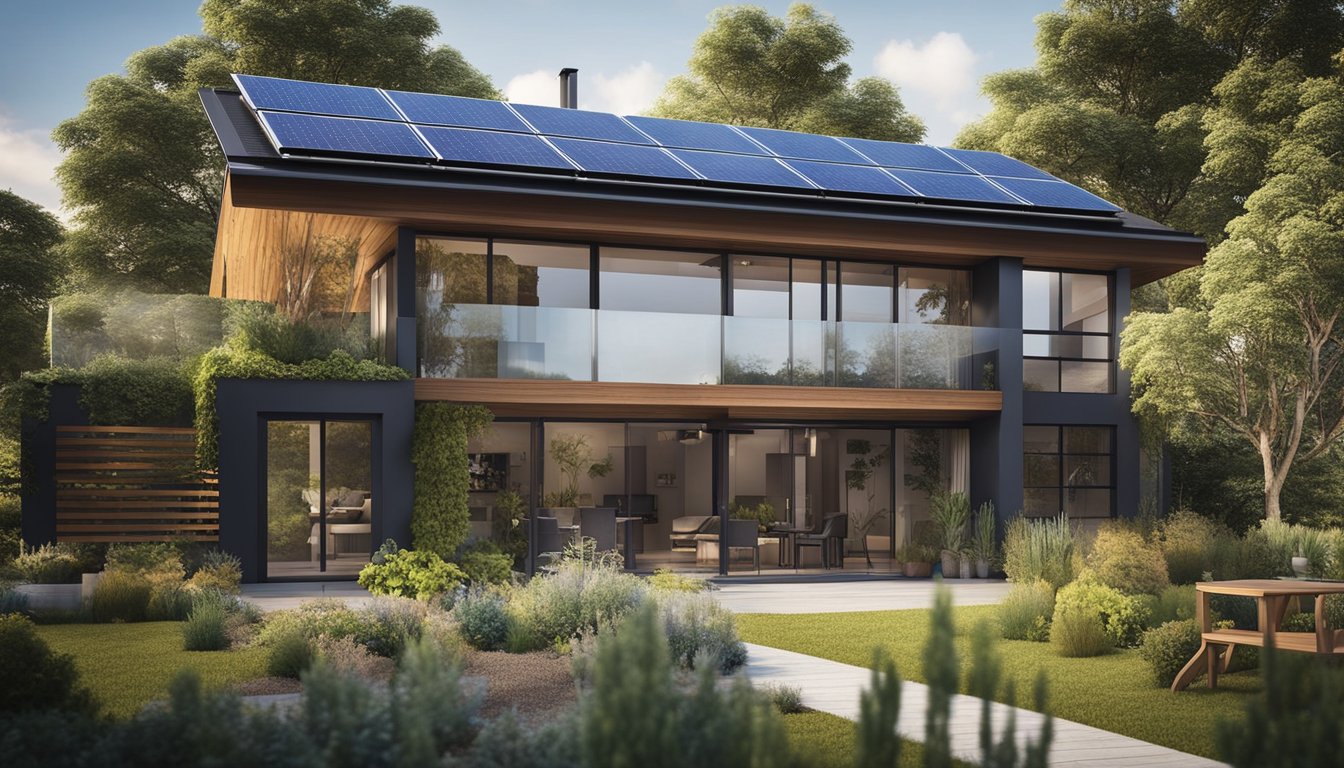Late updated: 01 Oct 2024 15:10
Written by: Daniel Harper
Innovative Energy-Efficient Home Renovation Ideas for Sustainable Living
Embarking on a home renovation journey offers a prime opportunity to incorporate innovative, energy-efficient ideas that not only enhance living spaces but also improve energy performance. In recent years, homeowners have become increasingly aware of the environmental impacts of traditional renovation methods. Adopting sustainable renovation practices using non-toxic and natural materials can significantly reduce carbon footprints and promote healthier living environments.

One approach involves enhancing your home's thermal envelope to reduce heating and cooling demands. Techniques such as installing efficient insulation and upgrading windows play a crucial role. Utilising renewable resources like solar panels can provide long-term savings and decrease reliance on fossil fuels.
By assessing our home's energy performance, we can make informed decisions about which solutions to implement. From installing smart thermostats to incorporating composting systems, each step we take contributes to a more sustainable future. These ideas not only boost efficiency but also align with modern building principles, making our homes kinder to the planet.
Key Takeaways
- Energy-efficient renovations enhance sustainability.
- Assessing energy performance guides renovation choices.
- Implementing smart solutions reduces environmental impact.
Assessing Your Home's Energy Performance
Understanding a home's energy performance involves evaluating its thermal efficiency and identifying improvements that could lead to reduced energy consumption. To achieve this, we must focus on conducting thorough energy audits and ensuring proper insulation. Both of these contribute significantly to sustainability and help lower a home's carbon footprint.
Conducting an Energy Audit
Conducting an energy audit is fundamental for evaluating a home's performance. It begins with a professional assessment where experts examine various aspects of the home's energy use. This includes heating, cooling, and the efficiency of appliances. By pinpointing areas where energy is wasted, we gain precise insights into possible improvements.
An audit often highlights inefficiencies such as poor insulation or outdated systems. Identifying these weaknesses allows us to make targeted changes, such as upgrading to more energy-efficient appliances or enhancing insulation. Simple adjustments like air sealing and caulking can significantly improve thermal performance. Energy audits not only improve efficiency but also support sustainable living by reducing energy consumption.
Importance of Proper Insulation
Proper insulation is crucial in maintaining energy efficiency. It reduces energy loss, contributing to a comfortable and sustainable home environment. Various insulation options are available, ranging from traditional materials like fibreglass to eco-friendly options such as natural insulation. Each type offers unique benefits in improving thermal performance and reducing a building’s carbon footprint.
Insulation plays a pivotal role in meeting energy codes, which are designed to enhance efficiency. Well-insulated homes require less heating and cooling, leading to reduced energy bills. By prioritising insulation, we ensure that energy use is optimised, increasing the home's overall efficiency and sustainability. Investing in proper insulation aligns with sustainable design principles, benefiting both the environment and the homeowner.
Implementing Energy-Efficient Solutions

We can transform our homes into eco-friendly havens by focusing on energy efficiency, incorporating sustainable materials, and leveraging renewable energy sources. Each of these elements plays a crucial role in reducing our environmental footprint while optimising home comfort and savings.
Choosing Sustainable Materials and Techniques
Selecting sustainable materials is fundamental in creating energy-efficient homes. Using reclaimed wood and recycled materials not only lowers our carbon footprint but also gives our interiors a unique character.
Focusing on bamboo flooring and other sustainable building materials supports the move towards more eco-friendly construction practices. Additionally, using local materials helps reduce transport emissions, contributing positively to the environment.
Incorporating passive house design principles, such as natural lighting and optimal indoor air quality, is vital. These choices enhance energy performance and reduce reliance on artificial lighting and heating systems.
Incorporating Renewable Energy Sources
Installing solar panels or solar thermal systems can significantly lower energy costs and further our commitment to sustainability. When positioned correctly, these systems harness the power of the sun, converting it into usable energy for our homes.
Another renewable option is solar water heating systems, which utilise solar energy to heat water efficiently. This approach reduces the reliance on traditional, more carbon-intensive water heating methods.
Embracing renewable resources and technologies supports green living initiatives and contributes to substantial energy savings. Incorporating these solutions into our home's infrastructure is an impactful step towards energy independence.
Optimising Water and Energy Utilisation
Deploying strategies to reduce water and energy usage is essential. Installing low-flow faucets and water-saving fixtures in bathrooms and kitchens can markedly decrease water consumption. Technologies like rainwater harvesting systems offer innovative ways to use naturally available resources.
To further enhance energy efficiency, integrating energy-efficient appliances is key. Switching to induction stoves in kitchens and using appliances with high-energy ratings supports this initiative.
Additionally, using programmable thermostats allows us to tailor heating and cooling to our specific needs, ensuring reduced energy waste and increased efficiency. This type of precision control contributes significantly to our sustainability goals.
Advancements in Home Heating and Cooling
Innovative heating and cooling solutions offer significant energy savings for homeowners. Heat pumps are an efficient alternative to traditional heating methods, offering both heating and cooling capabilities in one system.
Implementing smart cooling solutions, such as optimised thermostat settings, enhances climate control without excessive energy consumption. Improved insulation and passive design techniques can also help regulate indoor temperatures.
Incorporating these advanced technologies and strategies not only improves comfort but also supports our long-term sustainability aspirations. By embracing these advancements, we contribute positively to energy efficiency and environmental preservation.
Frequently Asked Questions

In the realm of energy-efficient home renovations, innovative approaches are crucial for transforming properties. From integrating cutting-edge technology to retrofitting existing structures for sustainability, the possibilities are numerous and practical. Here, we explore some of the most pertinent questions around this transformative process.
What are some cutting-edge methods for enhancing the energy efficiency of home renovations?
Emerging technologies such as smart thermostats and solar panels lead in enhancing energy efficiency. These tools allow homeowners to monitor and control energy usage effectively. Additionally, advanced insulation materials like aerogel provide superior temperature regulation, contributing to reduced energy costs.
How can existing buildings be retrofitted to be more sustainable?
Retrofitting involves adding energy-efficient upgrades to existing buildings without major reconstruction. Installing double-glazed windows, for example, is effective in improving insulation. LED lighting systems and energy-efficient appliances can significantly lower energy consumption, further enhancing sustainability.
In what ways can homeowners implement sustainable improvements in their properties?
Homeowners can focus on using recyclable or eco-friendly materials during renovations. For instance, choosing bamboo flooring and recycled steel or wood can reduce a project's environmental footprint. Incorporating rainwater harvesting systems is another sustainable improvement, aiding water conservation efforts.
What are the key features of a green home remodelling project?
Key features of a green remodelling project include using sustainable materials and incorporating renewable energy systems. Solar panels and geothermal heating are becoming standard in green homes. Additionally, optimising natural light through strategic window placement helps in reducing reliance on artificial lighting.
Which home design alterations contribute most to improving energy efficiency?
Adding extra insulation and sealing drafts are top-priority alterations. These changes help maintain a stable indoor temperature, lowering heating and cooling costs. Upgrading to energy-efficient windows and incorporating passive solar design also play significant roles in boosting energy efficiency.
What are the characteristics of a highly energy-efficient home design?
A highly energy-efficient home often features airtight construction to minimise air leaks and energy loss. It integrates high-performance HVAC systems and enhanced insulation. Innovative designs often maximise natural light and passive heating, creating a comfortable environment while conserving energy.
